Twice now in the past six months I’ve gone to Las Vegas for a concert. Trust me, I’m just about the last person you’d expect to spend any time in Vegas—I have zero interest in gambling or shopping, and the nonstop lights and noise of the Strip really get on my nerves. So since we had some time to kill before the shows, we ventured out of the city to explore the desert.
One of the places we visited both times was Valley of Fire State Park, Nevada’s first state park, established in 1935. Located to the northeast of Vegas, Valley of Fire is about as un-Vegas as you can get. It’s only about an hour out of the city, and is a welcome change from the sensory overstimulation of the Strip. It would be brutally hot there in the summer, but in the fall and late winter was lovely. Even though it will never be one of my favorite habitats, I find the desert fascinating. The limited color palette has my photographer’s eye looking for nuances in color value and texture in the landscape. And some of the blue skies are amazing.
On the way to Valley of Fire this time we drove through the Lake Mead National Recreation Area. One of the interesting places we passed was Rogers Spring, which is a naturally occurring oasis. It runs continually throughout the year, although the National Park Service website says that the ultimate source of the water is uncertain.
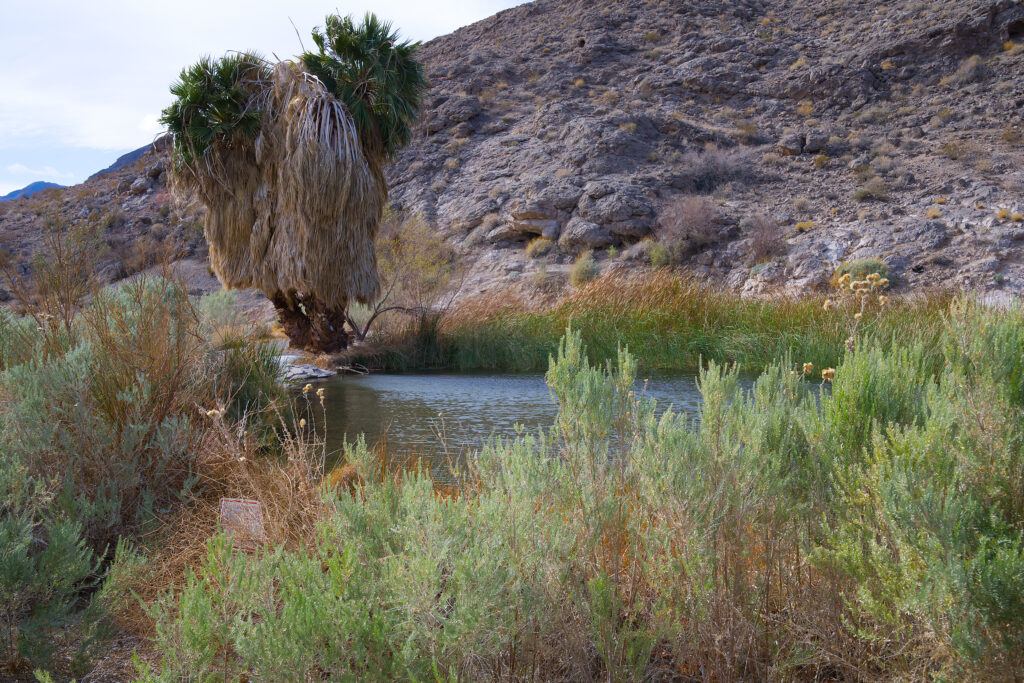
©️ Allison J. Gong
2025-02-07
The sign that is mostly obscured by foliage tells people that they can protect the ecology of this rare desert oasis by not releasing their pet fish/reptiles/amphibians into the spring. Clearly the warning comes too late, as I saw many “liberated” pet fish—guppies, gouramis, and goldfish—swimming in the spring. Perhaps other springs are farther from the road and not as easily accessible as this one, and perhaps those are less affected by human stupidity.
The Valley of Fire takes its name from the iron-rich rocks that dominate the landscape. The geology of the place is amazing! We didn’t have time to go fossil-hunting or do much hiking, but even from the road the vistas were spectacular.
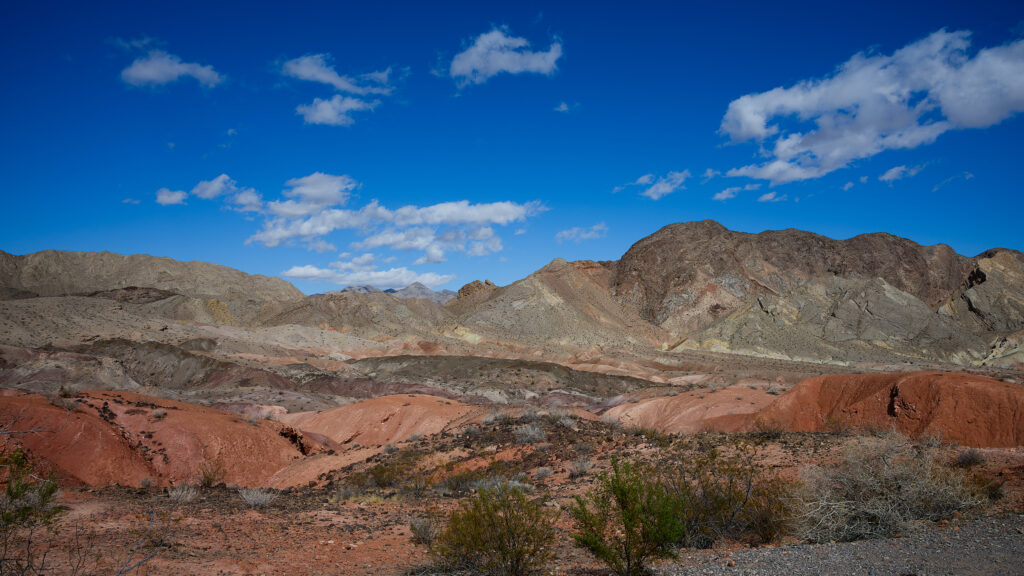
© Allison J. Gong
2025-02-07
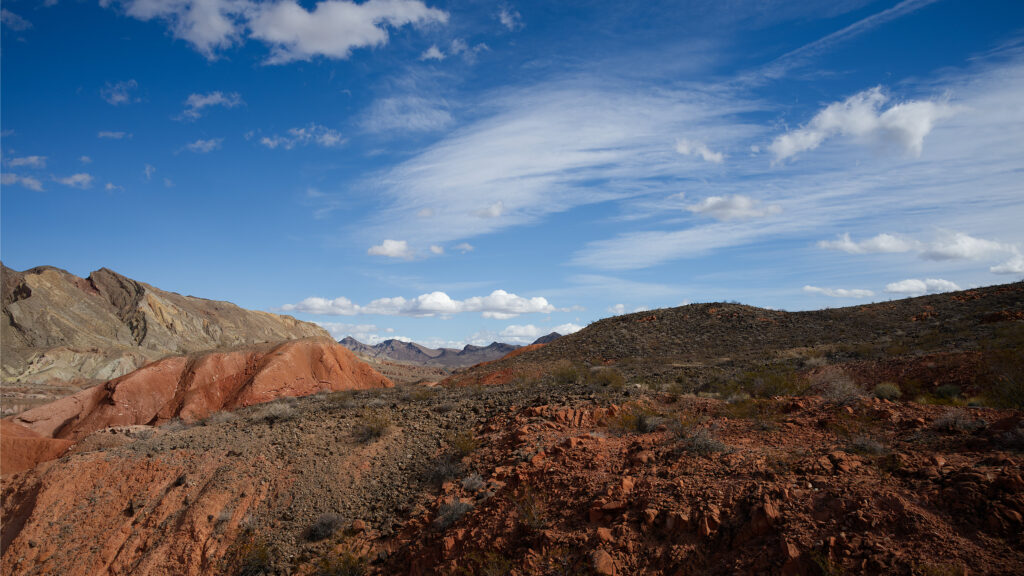
© Allison J. Gong
2025-02-07
Up close, we could see undulating patterns in the rock formations.
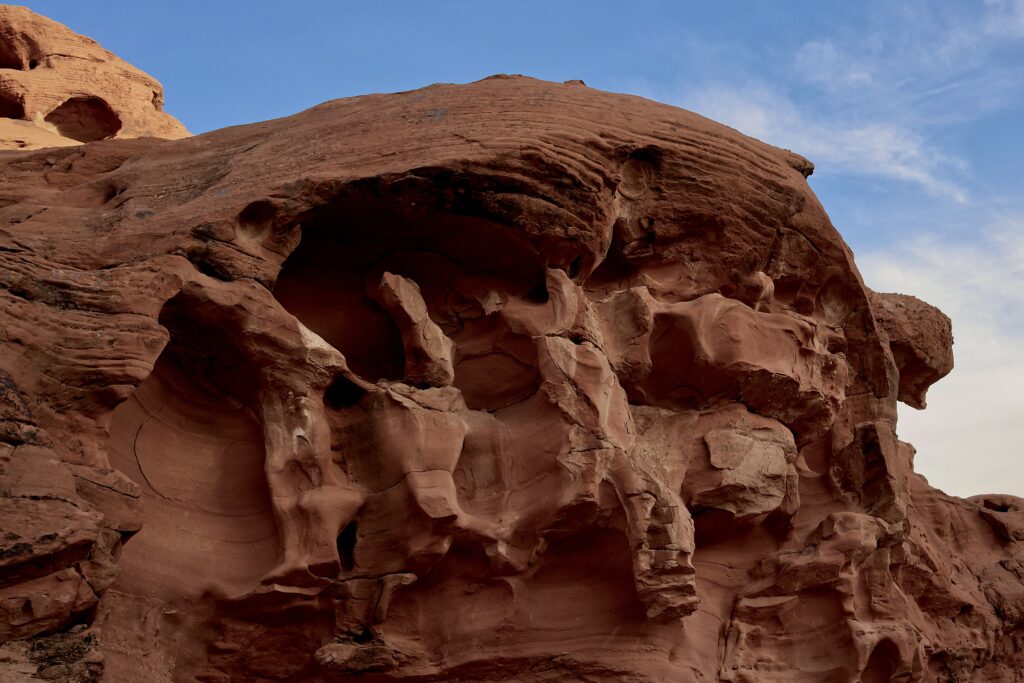
© Allison J. Gong
2025-02-07
But the one thing I really wanted to see was one of the petroglyph formations in the park. The oldest petroglyphs in Valley of Fire date back to about 2000 BCE. There are two easily accessible petroglyph formations, and we visited the one nearest the visitor center in an area called Mouse’s Tank Trail.
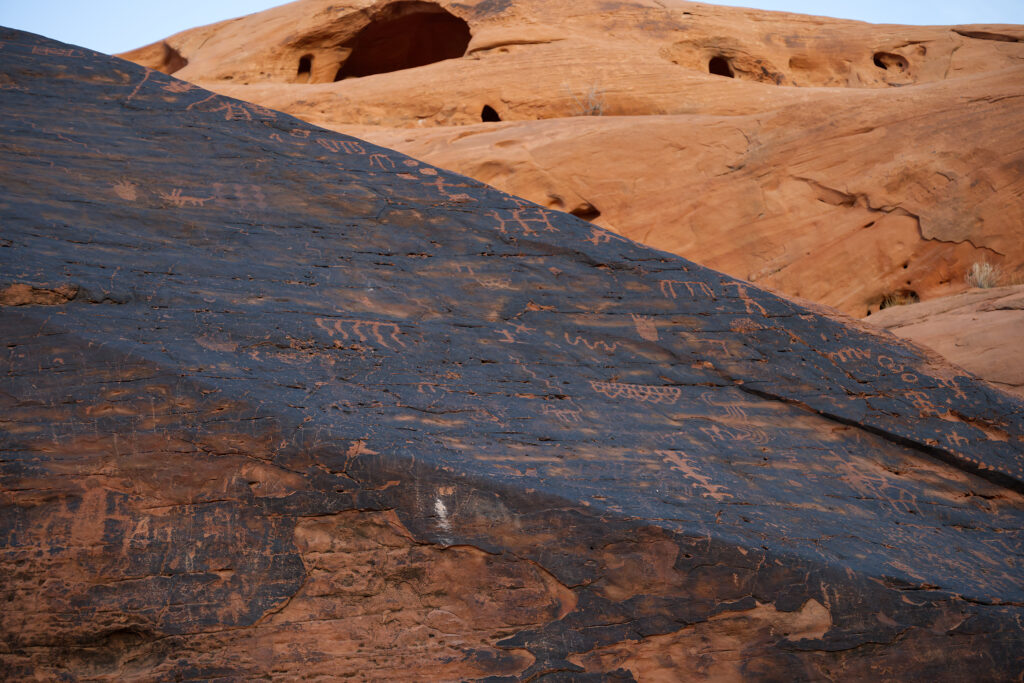
© Allison J. Gong
2025-02-07
and
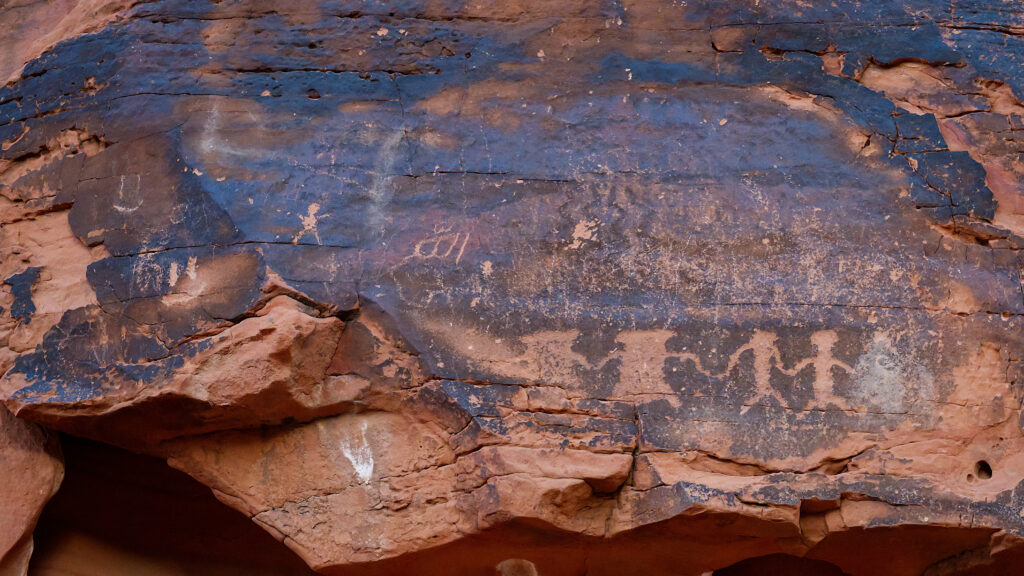
© Allison J. Gong
2025-02-07
These particular petroglyphs are right along the trail, which is why I don’t think I’m drawing unwanted attention to them. Anybody can walk right up them, and some people have unfortunately decided to leave their mark. Obviously, that smiley face on the far left isn’t a petroglyph. I was actually surprised that the petroglyphs were as un-messed-with as they appeared to be. I’m neither an anthropologist nor an historian, but I do wonder what these early artists were trying to communicate. Some of the images are clearly people, and with some imagination I can see animals in others. An anthropologist named Eric Pacl wrote a thesis about the Valley of Fire petroglyphs for their M.A. degree in Archeology from UNLV in 2012. I defer to their expertise and interpretation of the petroglyphs.
So if you find yourself in Vegas and don’t want to the whole Vegas thing, head out of town and check out Valley of Fire State Park. You won’t regret it!
